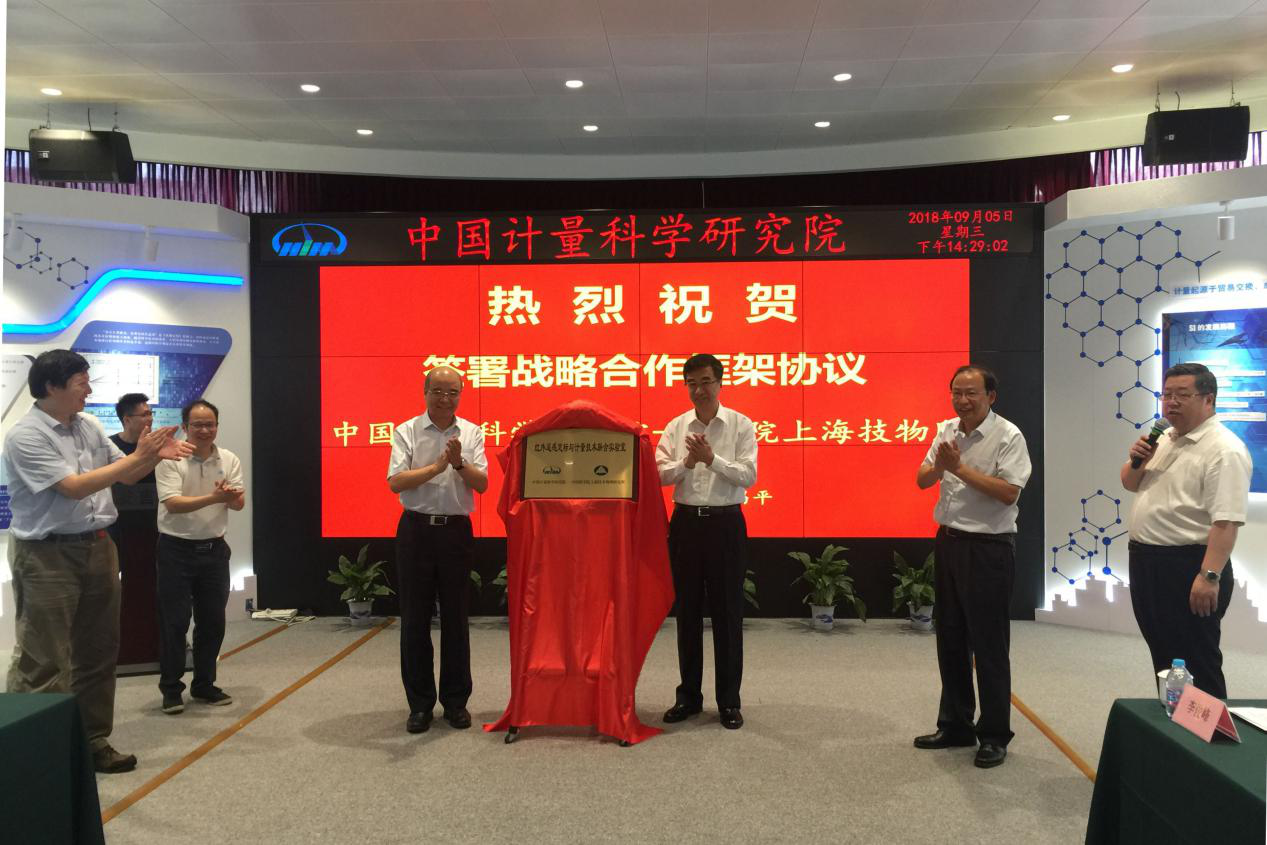Release date: September 6, 2018
On September 5, NIM and the CAS Shanghai Institute of Technical Physics signed a strategic cooperation agreement in the Changping campus of NIM to launch the construction of the "Joint Laboratory of Infrared Remote Sensing Calibration and Measurement Technology". Qin Yizhi, Deputy Minister (minister-level) of the State Administration for Market Regulation and a party member, and Xiang Libin, Deputy Director of the Chinese Academy of Sciences and a party member, witnessed the signing ceremony.
Qin Yizhi said that the powerful combination between NIM and the Shanghai Institute of Technical Physics to tackle the technical problems of infrared remote sensing was a significant event for China's basic research. The State Administration for Market Regulation would do its utmost to create conditions and offer support, allowing both parties to devote to scientific research, and to effectively implement every detail of the strategic cooperation agreement by giving full play to their respective strength and making up for each other's deficiencies for mutual benefits as expected to get actual effects.
Xiang Libin expressed that the signing was a continuation of the extraordinary cooperation between the Shanghai Institute of Technical Physics and NIM. It was hoped that both parties would work for collaborative innovation, lead the development of international infrared remote sensing with high precision, and jointly recommend and undertake major national scientific and technological tasks, thus driving forward the upgrade of the Joint Laboratory to a national key laboratory as soon as possible.
Fang Xiang, Director of NIM and Lu Wei, Director of the Shanghai Institute of Technical Physics of the Chinese Academy of Sciences, signed the strategic cooperation agreement on behalf of both parties. According to the agreement, both parties will build a comprehensive partnership based on the principles of mutual complementarity, mutual benefits, synergic innovation and joint development. Both parties will construct a collaborative innovation team and a Joint Laboratory, jointly declare scientific and technological tasks of important national meanings, conduct regular academic exchanges, strengthen the research on national quality infrastructure technologies and standards, and work together to train postgraduate students.

